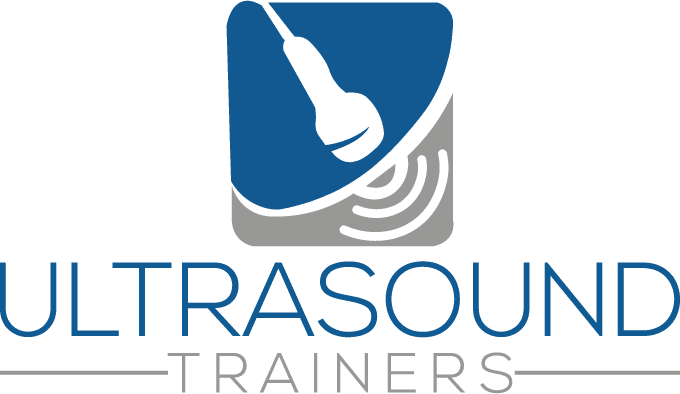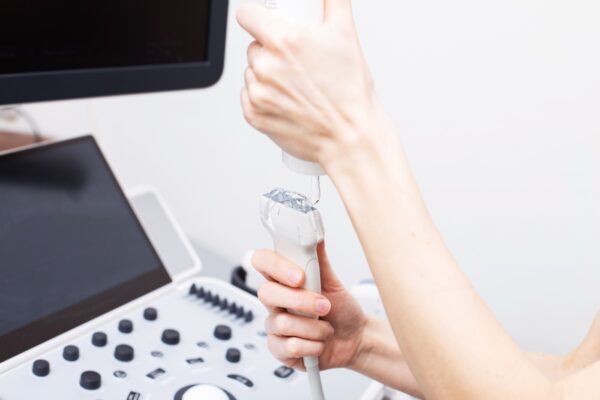How to Do 4D Ultrasound in Your Boutique Studio A Complete Guide
Objective: help you capture smooth, flattering 4D clips that clients love to share while strengthening safety, brand consistency, and revenue in your Elective Ultrasound Business. You will find practical probe angles, image presets, client positioning, a repeatable shot list, and simple Ultrasound Business Marketing Tips you can start using today.
Why 4D captivates parents and how to set expectations
4D is simply 3D volume rendering in motion. The fourth dimension is time. It lets families see lifelike expressions, yawns, stretches, and little hand movements. When the clip is smooth and evenly lit, it creates an emotional response that drives word of mouth for any 3D or 4D Ultrasound Business.
Parents most often request the face, a sweet profile, hands near the chin, and gentle kicks. Explain that clarity depends on fetal position, fluid, placenta, and gestational age. This transparent conversation early in the session prevents disappointment later and builds trust in your studio.
From a technical view, smoothness comes from a balanced acquisition box, a reasonable volume angle, and a frame rate that keeps up with motion. You can transform a choppy clip into a cinematic one by reducing depth and tightening the 4D box before you press record.
Finally, the way your render looks is part of your brand. Warm skin tones, natural virtual lighting, and tasteful smoothing provide that classic keepsake baby ultrasound aesthetic that clients expect and share on social media, which feeds bookings organically.
3D, 4D, and HD naming without confusion
3D is a still volume you can rotate. 4D is that volume shown as a live video. Some systems add enhanced lighting modes often called HD or 5D. The label matters less than whether your image is pleasing and consistent across sessions.
When you explain it, keep it simple. Say that 4D is live 3D and that results vary by position and fluid. Parents appreciate plain language and realistic expectations. Your refund rates drop and satisfaction rises when you set that tone.
Always reinforce that elective imaging does not replace medical care. Encourage clients to continue their diagnostic ultrasounds with their providers and make that part of your policies and consent language.
Machine setup that makes 4D look smooth and natural
Every beautiful render starts with clean 2D. If your 2D is hazy or overgained, your 4D will inherit those flaws. Begin with a depth that fills one third to one half of the screen with the target anatomy. Set overall gain conservatively and fine tune with time gain compensation.
Next review your 4D preset. Start with a medium acquisition box and moderate angle. If motion looks choppy, reduce box size first, then narrow the angle. Doing this improves frame rate without sacrificing the face in the render window.
Surface settings control the mood. The threshold defines what becomes “skin.” Too high erases detail, too low leaves speckle. Apply smoothing lightly to remove grit but preserve cute features like nostrils and lips.
Place virtual light slightly above and to the side for natural shaping. Like portrait photography, a small angle creates depth and soft shadows. Save your favorite combination as a named preset so every staff member can produce the same look.
Keep a second preset for tricky cases. A slightly stronger light and a small boost in contrast help when fluid is marginal or the placenta is anterior. Consistency is key when you scale into an Ultrasound Franchise or add new staff.
Build a rock solid 2D foundation
Find the face in 2D first. Use your convex 4D probe in standard obstetric mode. Sweep slowly to locate the orbits, nose, and lips. Once you have a clean midline, freeze and adjust depth and focus so the face sits in the center third.
Reduce overall gain until the amniotic fluid is truly anechoic. A slightly darker 2D background gives you a cleaner mask in 4D. Recheck TGC sliders so the near field is not brighter than the far field.
Confirm mechanical index and thermal index are appropriate for a non diagnostic keepsake session and keep dwell times prudent. When in doubt, shorten clip length and capture several shorter videos instead of one long take.
Only after 2D is clean should you switch to your 4D preset. This sequence speeds you up and keeps your render stable.
Dial in surface aesthetics and lighting
Use a warm but neutral tone for skin. Many systems include a few default palettes. Choose one that avoids orange cast and preserves delicate detail. Parents want natural looking babies, not a heavily filtered look.
Set the virtual light to a gentle off axis position. Think of a photographer placing a softbox slightly above eye level. This creates subtle shadows near the nose and under the lips for shape without harshness.
Turn down smoothing when fluid is excellent to keep texture. Increase it a little when fluid is borderline to hide speckle. The art is to do just enough, never too much.
Save these settings as a preset with a simple name like Face-Standard and load it at the start of every session so your brand look is always the same.
Probe handling and angles that consistently find the face
Hold the probe lightly and keep your wrist relaxed. Small angle changes make big differences in 4D. When you find the face in 2D, lock your fingers and make micro tilts rather than big sweeps. This reduces motion blur in the volume acquisition.
Rotate the probe to align the facial plane horizontally in 2D. Then activate 4D and tighten the box until it just frames the face and a little space in front. A smaller box raises frame rate for smoother clips.
Use slow steady breathing as a metronome to keep your hands stable during acquisition. Clients often comment on how calm your scanning looks. That calm shows up in your render quality.
Record short clips of four to eight seconds. Reset the angle and repeat. Several short takes give you more usable choices and prevent boredom in the final edit.
Gestational age specific strategies
18 to 23 weeks: Babies are small and fluid is generous. Go wider with depth to keep context, then crop in 4D. Hands and feet near the face are common and adorable.
24 to 30 weeks: This is the golden window for many studios. Fluid is still good and facial fat adds definition. Use your standard preset and keep the box tight for frame rate.
31 to 34 weeks: Space gets tight. Ask the client to change sides or sit semi upright to shift fluid. Use a smaller box and a touch more smoothing and contrast in your backup preset.
35 weeks and beyond: Focus on profiles, lips, and little movements rather than full face. Manage expectations kindly and celebrate the details you can show.
Working around placenta, cord, and hands
An anterior placenta is common. Angle from the side rather than straight on to avoid shadow. Sometimes a slight maternal roll moves the face out from behind the placenta enough for a clean view.
Cord in front of the face creates streak artifacts. Try a micro tilt and a minor box shift first. If it persists, switch to profile and capture sweet nose and lip shots while you wait for movement.
Hands across the face can be charming. Capture both a hand on cheek moment and a clear face moment if possible. Variety makes your final montage feel lively.
Client positioning and engagement that improves results
Your room layout matters. Seat the client where you can access both sides easily and where the large display is comfortable to watch. Offer a pillow wedge to adjust angle and reduce pressure.
If baby is shy, small maternal position changes often help. Roll to the opposite hip, sit semi upright, then try a gentle hip wiggle. These simple moves can shift fluid around the face just enough to reveal a better window.
Hydration throughout pregnancy supports amniotic fluid, and a light snack before the session may increase fetal movement. Phrase this as a friendly tip in your pre visit email rather than a guarantee.
Keep the vibe warm and celebratory. Narrate what you are doing in simple terms. Clients feel included and relaxed, which helps you scan more smoothly.
Encouraging movement and managing fluid
When movement stalls, pause recording and invite a brief position change. A slow stand and stretch can work wonders. Resume with a fresh angle and a tightened box.
Use shorter depths and a closer box to make the most of limited fluid. This reduces the amount of fluid you need to traverse with sound and preserves frame rate.
Have a gentle time limit for rescans. Offer a brief return visit policy that is clear and kind. It protects your schedule while keeping clients happy.
Document what worked in your session notes. Over time you will see patterns that help you predict which tips to try first.
Comfort, privacy, and communication
Explain each step before you do it. It lowers anxiety and reduces sudden movements that can blur acquisitions. A relaxed client helps you hold a steadier hand.
Dim room lighting to focus attention on the display. Soft instrumental music keeps the room calm without competing with your narration.
Celebrate small wins out loud. When you say “there is a great profile,” clients lean in. That enthusiasm translates into more upgrade purchases and enthusiastic reviews.
Session flow, shot list, and delivery that boosts sharing
A simple consistent flow makes your results predictable and makes it easy to train new team members through Elective Ultrasound Training. It also prepares your studio to scale with Ultrasound Business Training Programs if you plan to grow or franchise.
Open with a quick 2D orientation, then capture a series of short 4D clips following a set shot list. Between clips, reset the box and angle to vary the look.
During the session, call out moments you know will be on the final montage. Clients love hearing you curate their story as it unfolds.
Close by replaying the best three clips on the big screen. Ask which they want featured first in their keepsake video. This little choice increases ownership and sharing later.
A proven 4D shot list
1. Establishing clip: a slow profile or partial face to set the scene. Four to six seconds is enough.
2. Hero face: a clean frontal face with gentle movement. Tight box for max frame rate and a warm light.
3. Hand to face: fingers near the cheek or a little nose rub. Do two takes from slightly different angles.
4. Personality moment: a yawn, stretch, or foot wiggle. Capture two short versions for variety.
File delivery and social media momentum
Export short MP4 clips in a mobile friendly size. Clients post more when the file plays smoothly on their phones without editing. Keep each clip under fifteen seconds.
Provide a simple share guide after the session. Suggest a caption and relevant tags that support your local SEO and brand. This is an easy win in Ultrasound Business Marketing Tips.
Offer upgrades such as a branded montage, extra stills, or a Keepsake Baby Ultrasound bundle. Small add ons lift your average order value without slowing the schedule.
Troubleshooting common 4D problems
Every studio faces tricky scans. What matters is your rapid problem solving. The checklist below covers the most frequent issues and the quick adjustments that solve them without changing machines or presets mid session.
Choppy motion: shrink the 4D box first, then narrow the acquisition angle, then reduce depth. This order preserves composition while raising frame rate.
Flat plastic look: lower smoothing slightly and move the virtual light off axis. Add a little contrast only if needed and check the threshold so pores and lips return.
Shadow over the nose: tilt to approach from the side, raise the face slightly in the box, and ask for a gentle maternal roll.
Quick fixes list:
- Haze or noise: lower overall gain, relevel TGC, and confirm depth is not excessive.
- Low detail: reduce threshold a notch and ease off smoothing.
- Cord artifact: micro tilt and slight lateral approach, then try profile.
- Frame rate dip: small box, narrow angle, shallower depth in that order.
Equipment choices, costs, and training for consistent results
Image quality depends on the probe, platform, and your technique. A capable 4D Ultrasound Machine with a reliable convex volume probe will serve you for years. When you Buy an Elective Ultrasound Machine, weigh total cost of ownership, warranty, and training support alongside sticker price.
The Cost of Starting an Ultrasound Business includes equipment, furniture, training, software, insurance, and marketing. Many owners start with a lean room and invest profits into upgrades in the first year. Transparent budgeting reduces stress.
Elective Ultrasound Training turns good equipment into great results. Standard operating procedures, presets, and a shared shot list make your studio resilient even when staff changes happen.
If you plan on Starting an Ultrasound Business with multiple rooms or consider an Ultrasound Franchise model later, document your presets and workflows now. Your future team will thank you.
Vendors who understand keepsake use cases save you time with ready to scan presets and honest advice about How to Open a 3D Ultrasound Studio without overbuying features you will not use.
Choosing the right 4D ultrasound machine for your room
Focus on three things: face clarity, frame rate in 4D, and ergonomics. If the machine can hold a steady 4D frame rate with a small box and moderate angle, you will get smooth clips even with active babies.
Evaluate screen quality in the viewing position. Clients judge your work on the big display. A crisp monitor and proper room lighting improve perceived quality immediately.
Consider service and warranty length. A machine that scans beautifully but sits idle waiting for parts hurts revenue. Ask about loaner options during service.
Make sure the presets are easy to save and recall so every scan looks like your brand, not a different look for each sonographer.
Training and SOPs with Ultrasound Trainers
Hands on coaching accelerates mastery. Ultrasound Trainers provides on site Elective Ultrasound Training, preset creation, and Ultrasound Business Training Programs that cover scanning technique, client flow, and marketing. Many studios say this is the single best early investment.
Standardize your shot list, safety checks, consent language, and delivery process into a short manual. New staff can be productive in days, not weeks, which matters when you open a second room.
Have questions about equipment bundles or training options for a 3D or 4D Ultrasound Business? Reach out to Ultrasound Trainers at (877) 943-7335 or Info@UltrasoundTrainers.com.
Marketing moves that turn great clips into steady bookings
Great scanning is the product. Smart delivery and sharing are the promotion. Build a simple process that encourages clients to post their favorite clip the same day. Provide a short caption template and a branded hashtag to support your visibility.
Create one educational post each month that answers a common question such as session timing or the difference between 3D and 4D. Link it internally to your packages page and a related blog post to strengthen topical authority.
Track reviews and reply with warmth. Social proof drives bookings. A steady flow of five star reviews supports both human trust and search rankings.
As you grow, consider packages and memberships that reward repeat visits at different gestations. That predictable revenue helps when you plan to scale or test an Ultrasound Franchise concept later.
Action steps this week:
- Create two 4D presets: Standard Face and Tricky Face. Save both to quick keys.
- Write a four clip shot list and tape it to the monitor until it is memorized.
- Draft a simple share guide with suggested captions and tags to include with every delivery.
- Schedule a refresher with Ultrasound Trainers to fine tune technique and session flow.
Frequently asked questions
What is the best gestational window for 4D face clips
Many studios get reliable faces between twenty four and thirty weeks because there is a balance of fluid and facial fullness. Earlier windows can be lovely for full body and hands near face, while later windows may call for profiles and details rather than full frontal face views.
Position and fluid matter more than any single week. A cooperative position with a little space in front of the face can beat a later week where the face is tucked behind the placenta. This is why client positioning and a calm scan matter so much.
Set honest expectations in your booking page. Say that you will always work to capture the best possible images for that day, and that results vary for natural reasons outside anyone’s control.
How long should each 4D clip be
Shorter is better for social sharing and for smooth motion. Aim for four to eight seconds per clip, captured at a frame rate that looks fluid on a phone. Then capture two to three clips of each moment from slightly different angles.
During playback, pick the best one or two clips per pose for the client montage. The final video feels energetic and polished rather than long and repetitive.
Short clips also reduce dwell time on any one spot which aligns well with prudent use principles.
Should I upgrade equipment or improve technique first
Always optimize technique and presets first. A clean 2D build, a tight box, and smart lighting can dramatically lift quality without any new hardware spend.
When you reach the limits of your system, talk with a knowledgeable vendor about a 4D Ultrasound Machine that matches your room size and volume. Ask for a live demo with your typical settings, not laboratory conditions.
Balance budget with training. The best machine still needs skilled hands. Plan for equipment and Elective Ultrasound Training together rather than choosing one or the other.
Key takeaways
Tight box first
Natural light angle
Short 4 to 8 second clips
Consistent presets
Warm, clear client communication
Next step: If you are Starting an Ultrasound Business or refining an existing keepsake room, a short training day focused on probe control, presets, and a repeatable shot list can lift results immediately. For bundles, training dates, or help to Buy an Elective Ultrasound Machine, contact Ultrasound Trainers at (877) 943-7335 or Info@UltrasoundTrainers.com.
Join the conversation: Are you planning to start your own 3D or 4D ultrasound studio or upgrade your workflow What part of 4D scanning challenges you most Share your thoughts in the comments and pass this guide along to a colleague.













